Learning to wing surf: Size, grips, valve system - how to find the right wing
Manuel Vogel
· 06.06.2025
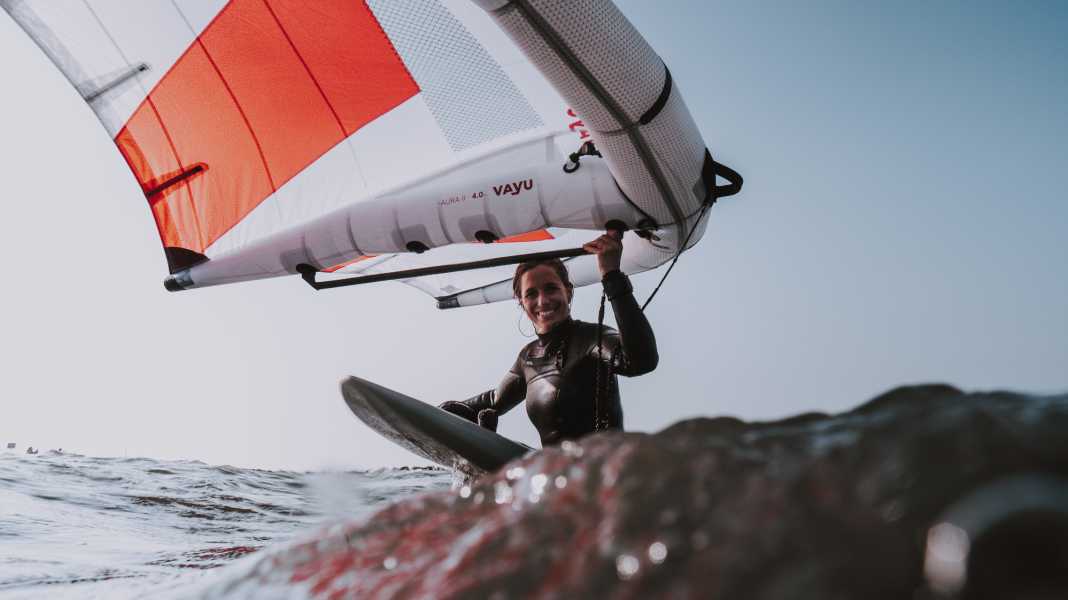
If you're new to wingsurfing, you'll be faced with a lot of questions and have to find your way through the jungle of technical terms. That's why we've put together all the basics and technical terms here before we help you find the right wing for your personal requirements in the second part of this article.
The Wing - technical terms & structure
Not everyone who starts wingsurfing has previous knowledge of other sports such as kitesurfing or windsurfing - so here are some basics and important terms:
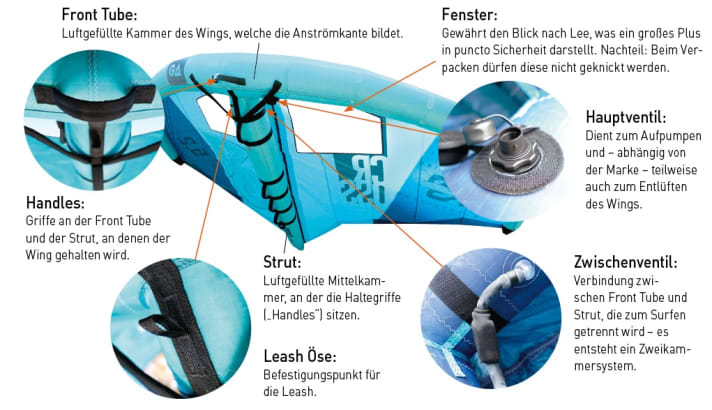
Building a wing is relatively simple and only takes a few minutes. We'll show you what's important in the following clip on our YouTube channel:
The right wing - how to find the right size
Wings are now available in all sizes from 2 to 8 square metres. While ambitious wingsurfers usually own several wings in different sizes, newcomers usually want to cover the appropriate wind range with one size. When choosing the right size, body weight, riding ability and, of course, wind strength are the key factors. The following applies: wings generally have a fairly wide range of use, as they can still be neutralised well in strong gusts. This means that you can cover a wind range of ten to 15 knots with just one size. The following recommendations apply to all those who want to with only one wing size want to cover as wide a wind range as possible:
For inland wingsurfers and prevailing wind conditions of six to 15 knots, the following recommendations apply:
- <60 kilos: 4.5-5 square metres
- 60-75 kilos: 5-5.5 square metres
- 75-95 kilos: 5.5-6.5 square metres
- >95 kilos: 6-7 square metres
The following recommendations apply for wingsurfers in coastal regions with regular wind conditions of twelve to over 20 knots:
- <60 kilos: 4-4.5 square metres
- 60-75 kilos: 4.5-5 square metres
- 75-95 kilos: 5-5.5 square metres
- >95 kilos: 5.5-6.5 square metres
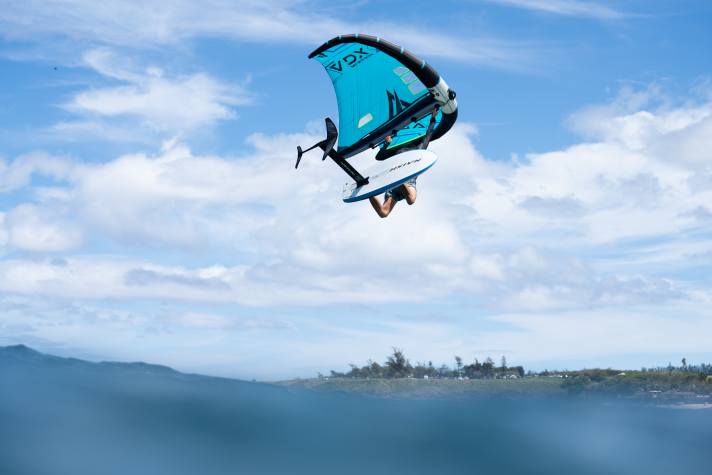
Boom or handles - which grip system makes sense for the Wing?
There are several different handle systems on the market - narrow and wide handles and even different boom systems that resemble a kite bar or a windsurf boom. A rough overview of the advantages and disadvantages of the different handle systems for wings can be found below:
1. narrow handles
Many first-generation wings were equipped with narrow handles - these are often currently available on the second-hand market. However, the popularity of this system is declining, as the grip position of the hands cannot be adjusted laterally with millimetre precision, which sometimes results in an unrelaxed grip. For small money, such wings can be ok, but following the trend towards fixed grips or booms is our clear recommendation.
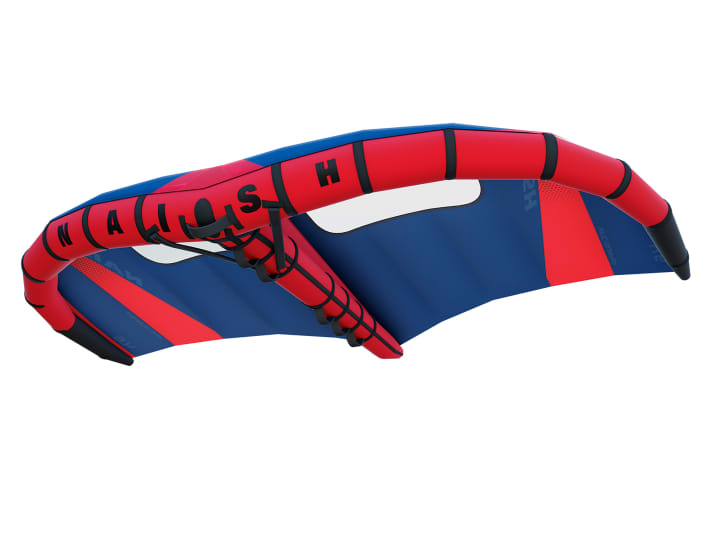
Advantages and disadvantages:
- Pro: Lightweight; no risk of injury
- ConPartially indirect power transmission; limited grip positions; precise gripping required in manoeuvres
2. wide handles/straps
To allow the hands to move sideways, some manufacturers equip their wings with wide handles. This allows you to choose a more suitable grip position and swing in a relaxed manner with equal tension distribution on both arms. To ensure that contact with the wing is not too indirect, wide handles are often sewn quite tightly to the strut - so you have to grip more precisely to "hit" the handle during manoeuvres. However, this handle system is also currently on the decline and will probably be phased out in the medium term.

Advantages and disadvantages:
- Pro: Lightweight; no risk of injury
- ConIndirect power transmission; precise gripping required
3. fixed handles
If you look at the wing market, there is a clear trend towards fixed, short handles. These are permanently attached to the wing and do not need to be (dis)assembled. The small pack size is also generally retained, as the wing can be folded between the handles.
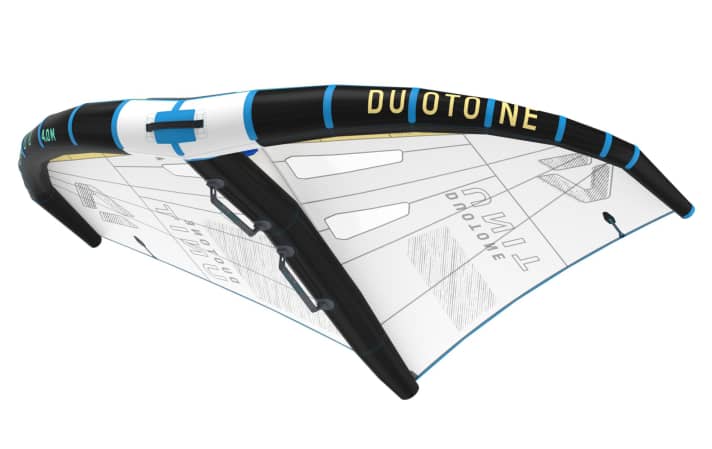
Advantages and disadvantages:
- Pro: Variable grip position; Direct control impulses; Easy to grip
- ConNo one-handed driving possible; risk of injury in the event of a fall
4. continuous boom
Full-length booms are also becoming increasingly popular. Although long booms sometimes add a little extra weight and usually have to be fitted quickly before the session, they offer unlimited freedom in the choice of grip position and maximum direct power transmission.

Advantages and disadvantages:
- Pro: Variable grip position; direct control impulses; easy to grip; one-handed driving possible
- ConRisk of injury in the event of a fall; somewhat heavier in some cases
Which handle system - the conclusion:
Short, soft handles are more a relic of days gone by and, regardless of the discipline, a discontinued model. Only wings for surf and freestyle still make sense in some cases, as they are very light and offer no risk of injury or damage. Whether you choose fixed handles or a continuous boom is primarily a matter of taste. If you come from kitesurfing or windsurfing and are already familiar with fixed bars or booms, you will usually feel most comfortable with continuous booms. In our Wing section we present many wings in detail - including those with an interchangeable handle system. Click here!
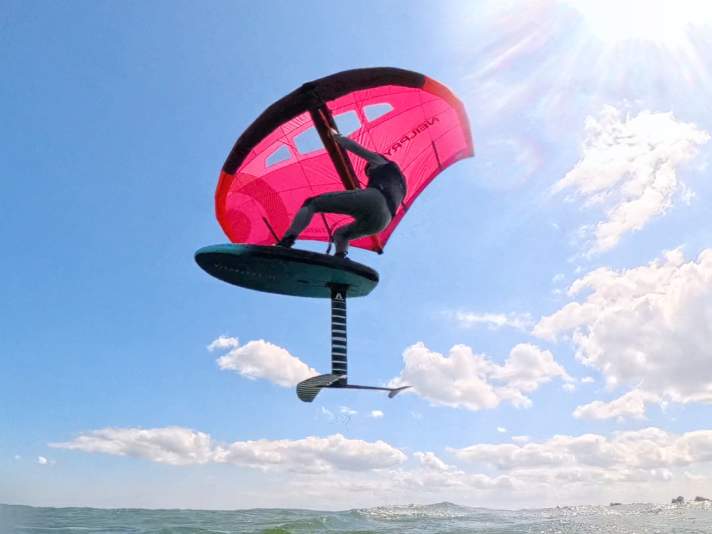
Wing with or without window?
Windows can offer extra safety, especially in crowded spots. However, most manufacturers only fit their wings with small viewing slits so as not to increase the pack size too much, as PVC windows should not be folded. All in all, we would advise beginners who are not yet confident jibing to use wings with windows. If you can already jibe or are travelling to less frequented spots, you can also do without windows in the wing, but should then take a quick look to leeward before every manoeuvre to check the free space.
Wings - keep an eye on the valve system
Wing are aerated and deaerated via special valves. Unfortunately, not all brands use the same system, which is why you should bear in mind buying a suitable pump. Alternatively, there are also adapters available in the surf shop with which you can convert your pump to a different system. Here is an overview of the most common systems on the market:







